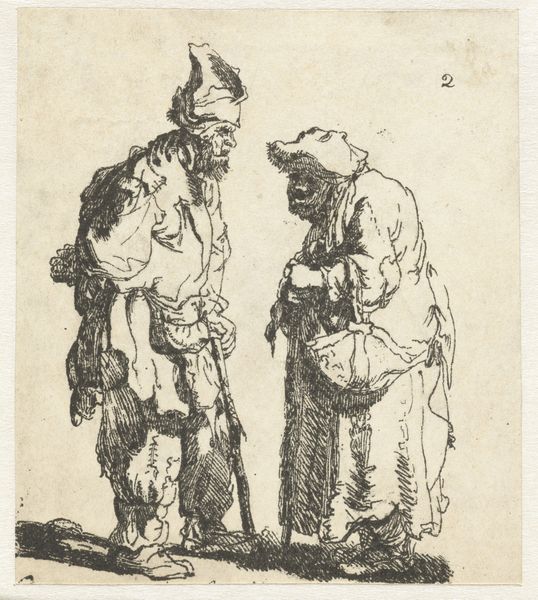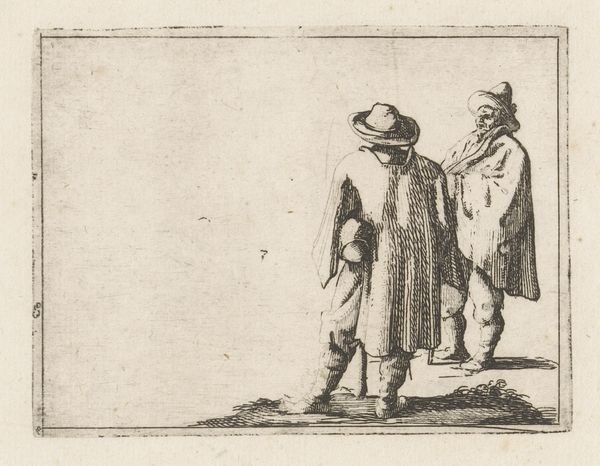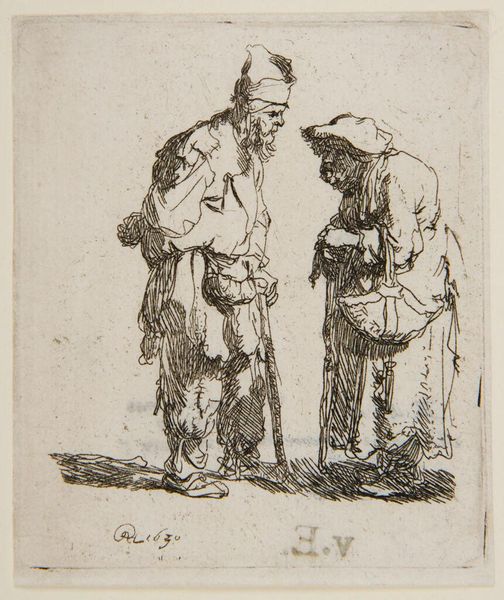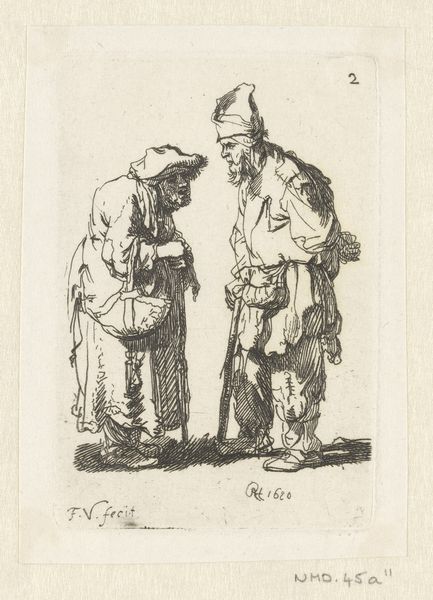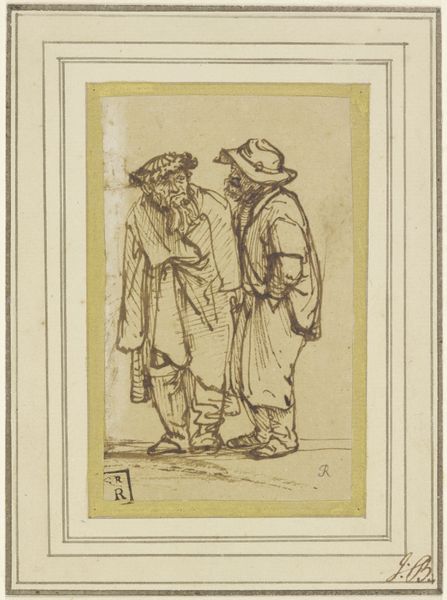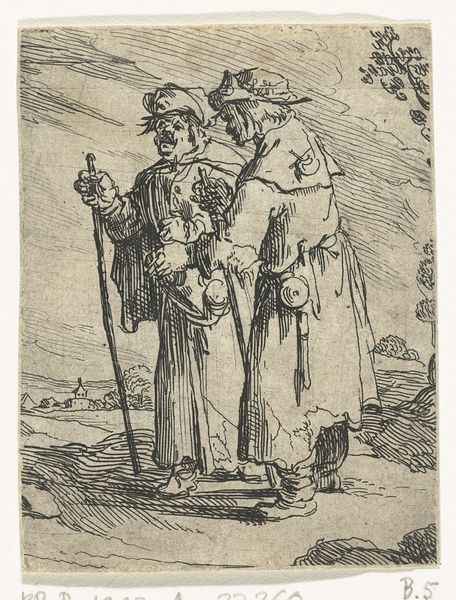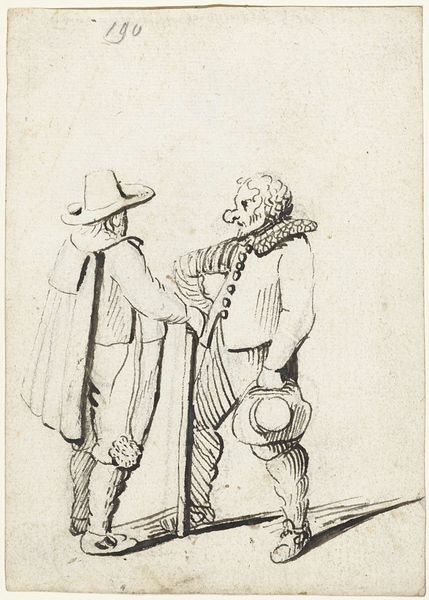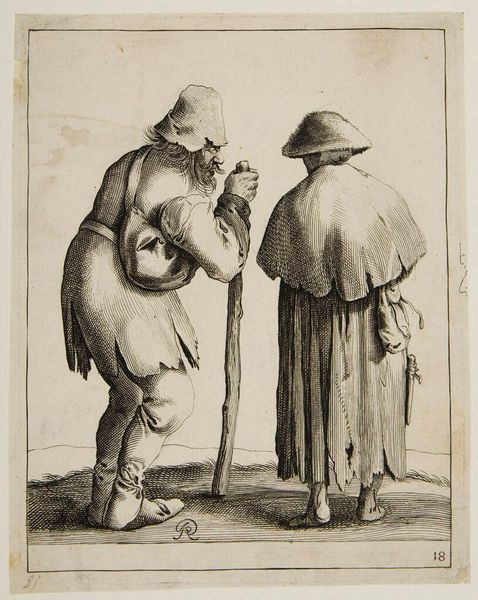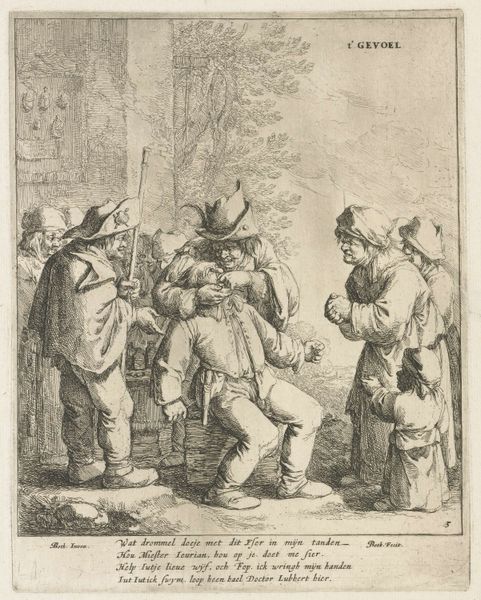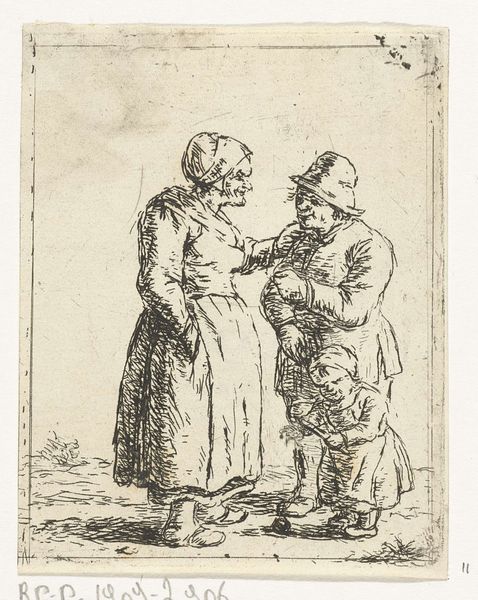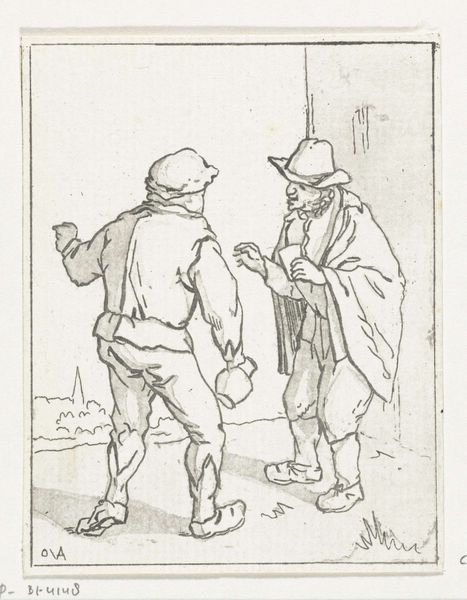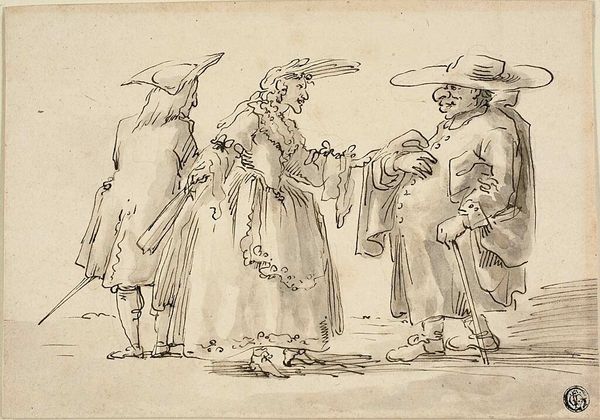
drawing, paper, ink
#
portrait
#
drawing
#
imaginative character sketch
#
quirky sketch
#
baroque
#
pen sketch
#
figuration
#
paper
#
personal sketchbook
#
ink
#
sketchwork
#
ink drawing experimentation
#
pen-ink sketch
#
sketchbook drawing
#
genre-painting
#
storyboard and sketchbook work
#
sketchbook art
Dimensions: height 172 mm, width 152 mm
Copyright: Rijks Museum: Open Domain
Curator: Rembrandt van Rijn’s "Three Orientals Conversing," dating back to around 1645, employs ink on paper to depict a trio of figures. The artwork is currently held in the collection of the Rijksmuseum. Editor: My first impression is intrigue—it’s so spontaneous and sketchy, but bursting with character. It feels like eavesdropping on a secret pact in some exotic locale. Curator: The interplay of line weights contributes significantly to the composition; notice the deliberate, heavier lines used to define the primary figure engaging in what appears to be a negotiation. The background figure, conversely, is rendered with much lighter strokes, receding visually. Editor: It’s more than just visual hierarchy. That main character, gripping hands with the guy in the pointy hat—he's all swagger and confidence rendered in thick, bold strokes, while the fella fading into the background… Is he a ghost, a memory, a shadow of doubt? Love that contrast. Curator: Consider, too, the deployment of hatching and cross-hatching, most prominent in delineating shadows within the figures' garments. It enhances volume but also communicates textural information, the quality of cloth. Editor: Absolutely. That textural contrast is really something, isn’t it? Like Rembrandt’s giving each figure their own unique materiality—one shimmering satin, another roughspun wool. Each texture gives subtle insights into each character. Curator: And we can't ignore the spatial ambiguity. Are these figures truly inhabiting the same space, or is this perhaps a collage of studies brought together on the page? The linear perspective is...unorthodox. Editor: See, to me, that ‘unorthodox’ perspective gives it a timeless, dreamlike quality. They’re both there and not there, forever frozen in this intense exchange, making me imagine all sorts of untold stories about what's going on between them. What are they whispering to each other? Curator: A provocative interpretation. It showcases how close looking and sensitivity to composition might offer avenues into the imagination itself, reflecting perhaps Rembrandt’s own creative exploration. Editor: I’ll second that, these scribbles don't tell a single story—they whisper hundreds. That’s why I’ll keep scribbling in my sketchbook for a lifetime to try and capture a feeling half as mysterious as what's in this old ink blot!
Comments
rijksmuseum about 2 years ago
⋮
In Rembrandt’s time, Amsterdam was an extremely cosmopolitan trade centre. Rembrandt was very interested in foreign types, especially in what have long been termed ‘Orientals’. For him, they probably represented biblical figures. He was especially intrigued by their faces and exotic clothing. He recorded them so that he could make the biblical scenes in his paintings and etchings as authentic as possible.
Join the conversation
Join millions of artists and users on Artera today and experience the ultimate creative platform.
